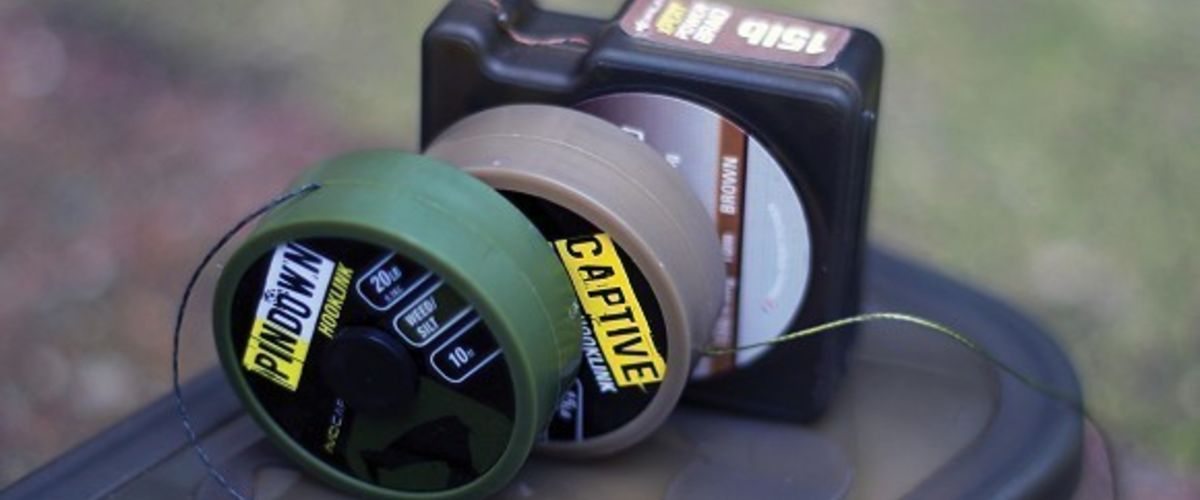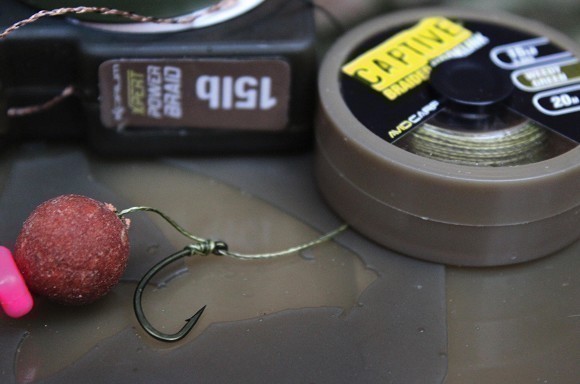
Is a supple hooklink better?
When every man and his dog is using a stiff or semi-stiff hooklink, isn’t it time to reconsider supple materials? Avid Carper Mat Woods begs a worthwhile question…
Supple rigs. In a sea of coated braids, it’s quite rare to see an angler confidently casting a braided hooklink into the pond. And even then, it’s usually wrapped neatly inside a solid PVA bag.
There aren’t many anglers I fish with that choose braid as a first choice hooklink material. There aren’t many I know at all that go for supple rigs first, either. The name that really springs to mind is Simon Crow, who has been using the same simple line-aligner rig with soft braid for longer than even he remembers. Crowy is one of the best anglers I’ve ever met and he probably reads my rig features and thinks ‘what are you on about Woodsy!’ He’s a great case-in-point of how anglers make certain presentations work for them and has a big fish record most Northerners could only dream of.
Add some stiffness - Try stiffening up the section immediately behind the hook with a Rig Kicker.
Stabilise the hook - A Rig Drop Sinker helps stabilise the last inch or so for better hookholds, more often.
Make it difficult - A blowback set-up makes it difficult for a carp to deal with a supple rig once pricked.
Braid works, but the question is, why does it work and how can we stack these benefits in our favour? I think most anglers avoid braid through a fear of tangles, which is understandable, but when there are so many easy ways to avoid tangles, it seems nonsensical to ignore the material altogether. Quite recently I had a great summer at Linear Fisheries using the braided rigs I usually use for solid bagging on standard lead clips. In fact, I find results to be better without the bag! Also, on RH Fisheries’ Weston Park, I had some big hits of summer carp using a simple snowman rig on a supple hooklink. In fact, at the time I was using a prototype material subsequently brought out as the Avid Carp Pindown. This is a lead-free material made from heavy PTFE fibres which makes it super supple, super heavy and really strong. It’s great as a leader and the 20lb version is a brilliant hooklink.
My rig was embarrassingly simple. A curved hook with a rig ring on the shank, tied Knotless Knot style. The more bait I put in, the shorter the rig got. It wasn’t any more or less complicated than that!
As the season wore on, I did find the odd carp coming astray during the fight. The Weston fish have really soft mouths so it was something most anglers suffered, but I wasn’t happy to accept it! Instead, I looked to improve the arrangement somehow. Braid’s benefits are truly related to the freedom and flexibility of the material. It tends to lay in coils, rather than ‘kicking away from the lead’ – which is in itself a misnomer but that’s another article (again) for another day – but these coils mean your rig always has a lot of lateral movement and ‘travel’ when your bait is picked up by a carp.
It also lays over most lakebeds really naturally. No sitting up off the bottom – it all lays down really nicely.
After this, you are relying on the end inch to do the work for you. With no stiffness from the hooklink end, there is no ‘point of no return’. You are 100% dependent on what happens to your hook inside the carp’s mouth.
Now one way to ensure effectiveness is a long Hair. The Kenny Dorset (KD) rig is okay for this, but I’ve found it to be the fastest and easiest way to hook and lose a carp. I know others who love it, but for me, I’d rather tie a dog turd on the end. The long Hair works okay with a Knotless Knot, but the hook is too free to fold over and simply fall from a carp’s mouth. It needs something to stabilize it.
Many anglers when using bottom baits put the Hair around the bend using silicone tubing, which works really nicely I think. The theory is the weight of the bait keeps the hook hanging ‘prone’ and whilst a boilie underwater isn’t necessarily that heavy, it does seem to work quite well.
The alternative, of course, is to add some form of line-aligner, a length of tubing, or a pre-formed Rig Kicker. Note that Crowy’s favoured set-up uses a line-aligner to neaten everything up and help the hook find a hold. It’s worth paying attention to this, as mentioned earlier, his results are pretty damn good!
I quite like just extending the curve of my favoured Avid CRV hooks. I use either the full Rig Kicker or a trimmed down version depending on the size of the hook and bait being used, but by just adding some stiffness behind the hook, I feel like my supple rig is working for me, rather than against me.
I’m a bit of a freak of nature in that I find it very hard to tangle anything. I have great results casting out braided rigs without a PVA bag, nugget or stringer, but if you are paranoid about this, all of the aforementioned help, but not as much as hitting a line clip or simply using your finger to ‘brake’ the line before it enters the water. ‘Feathering’ the lead down I’ve found to increase tangles. You buffering the line as the lead slows down just causes everything to wrap around itself – it’s not the one!









